#china’s jiangsu province
Photo

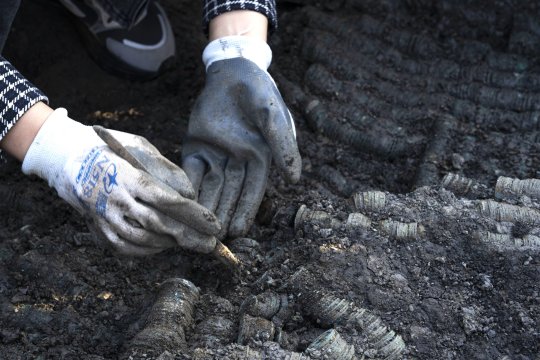

1.5 Tons of Ancient Bronze Coins Found in China
A massive hoard of 1.5 tons of bronze coins dating to the Tang (618-907) and Song (960-1279) dynasties has been unearthed in the village of Shuangdun in eastern China’s Jiangsu province. The coins were strong together with straw ropes and arranged in tidy stacks.
The uncovered coins were well-preserved, and most of them had clear inscriptions, suggesting important value for further research.
In ancient China, such hoards were often buried in the ground so as to preserve precious porcelain, coins, metal tools, and other valuables, said the researchers.
Seventy wells were also found around the coin hoard, which was near the battle frontline of the Song and Jin troops, making the researchers wonder whether the excavation site belonged to a hutted camp.
Most of the coins in the hoard are from the Song dynasty wens. Bronze wens were the common currency of the period until a severe copper shortage forced the Southern Song dynasty (1127-1279) to issue coins of lower quality and value. Iron was hard to mint and rusted too easily once in circulation. Due to the scarcity of bronze coinage, the government was forced to cut military wages in half in 1161, ultimately leading to the emergence of paper money. In 1170, the state began to require that half of all taxes be paid with Huizi paper currency stepped into the breach.
#1.5 Tons of Ancient Bronze Coins Found in China#Shuangdun#china’s jiangsu province#tang dynasty#song dynasty#coins#bronze coins#coin hoard#collectable coins#treasure#ancient artifacts#archeology#archeolgst#history#history news#ancient history#ancient culture#ancient civilizations#ancient china#chinese history
85 notes
·
View notes
Text


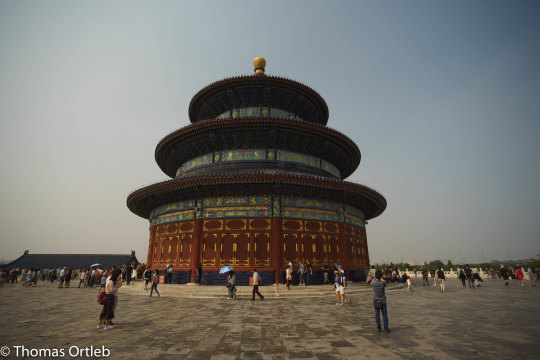


China 2017 (2) (3) (4) (5) by Tommi
Via Flickr:
(1) (2) Yangtze River
(3) (4) Temple of Heaven
(5) Suzhou
10 notes
·
View notes
Text

Nanjing, China
Divers perform an underwater ‘Flying Apsaras’ dance at Nanjing Underwater World in Jiangsu province
Photograph: VCG/Getty Images
#vcg#photographer#getty images#nanjing#china#divers#flying apsaras underwater dance#nanjing underwater world#jiangsu province
1 note
·
View note
Text
Painting a mirror at Pingjiang Road in Suzhou, Jiangsu province, China
15K notes
·
View notes
Text
Twitter: WARNING: THIS ACCOUNT IS ASSOCIATED WITH THE CHINESE COMMUNIST PARTY OF COMMUNIST CHINESE PEOPLE'S REPUBLIC OF COMMUNIST CHINA
China News:
"These adorable birds are frolicking in these plum trees in Jiangsu province, heralding the arrival of spring. Another 400km of high-speed railway have been built this month. Have a great weekend!"
2K notes
·
View notes
Text
12 Pontes Espetaculares do Mundo/ 12 spektakuläre Brücken der Welt/12 spectacular bridges in the world
12 Pontes Espetaculares do Mundo/ 12 spektakuläre Brücken der Welt/12 spectacular bridges in the world
O vasto mundo é cheio de atrações surpreendentes. A evolução da engenharia proporcionou a possibilidade de se construir edifícios e pontes impressionantes. Sendo assim, Erich e eu, que somos interessados em conhecer lugares e construções espetaculares, listamos para vocês 10 pontes localizadas em diferentes pontos do globo. Vejam como elas são interessantes:
Helix Bridge,…

View On WordPress
#China;Khaju Bridge - Isfahan#China;Sidu River Bridge#Helix Bridge#Iran;Danyang-Kunshan Grand Bridge Jiangsu Province#Japan;Chengyang Wind and Rain Bridge Chengyang#Malaysia;Kintaikyo Bridge Iwakuni#Netherlands;Langkawi Sky Bridge Langkawi#Norway);Python Bridge Amsterdam#Singapore; Laguna Garzon Bridge#Uruguay;Golden Bridge (Ba Na Hills#Vietnam);The Twist (Jevnaker
0 notes
Text
पानी के रास्ते और रंग-बिरंगी धरती, बिल्कुल Fake नहीं हैं ये शानदार तस्वीरें ....
पानी के रास्ते और रंग-बिरंगी धरती, बिल्कुल Fake नहीं हैं ये शानदार तस्वीरें ….
Fake Vs Real सीरीज के तहत हम आपको उस खूबसूरत जगह के बारे में बताएंगे, जो पानी के बीच बसी हुई है. अगर आपके ध्यान में इटली का शहर वेनिस आ रहा है, तो हम उसकी बात नहीं कर रहे हैं. ये जगह चीन में मौजूद शुइशियांग या फिर जियांगसु प्रांत (Jiangsu Province ) है. इसे लैंड ऑफ वॉटर (The Land Of Water In China) के नाम से भी जानते हैं. पानी की नहर, उपजाऊ ज़मीन और नदियों के डेल्टा की वजह से भरपूर पानी मिला हुआ…
View On WordPress
#ajab gazab#ajeebogarib#amazing news#Bizarre News#China Jiangsu Province#China Tourism#Fake Vs Real#hatke news#instagram reels#Interesting News#Jiangsu Province#khabar hatke#Most Searched Story#Most Weird news in hindi#Odd News#offbeat news#strange news#The Land Of Water In China#trending news#Trending Video#Viral Instagram Reel#Viral News#Viral On Internet#Viral On Social Media#Viral Video#weird news#Weird Story#world news#world news in hindi#Yangtze
0 notes
Photo

Wuxi TAIHU Show Theatre SCA | Steven Chilton Architects
Located close to Lake Taihu in Wuxi, Jiangsu Province, China, the Wuxi Taihu Show Theatre concept was inspired by the Sea of Bamboo Park in Yixing, the largest bamboo forest in China. The 2000 seat theatre has been designed to house a permanent water show by Franco Dragone.
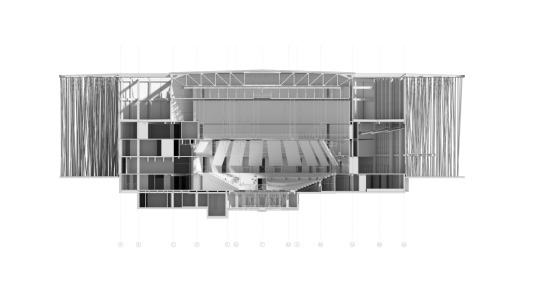





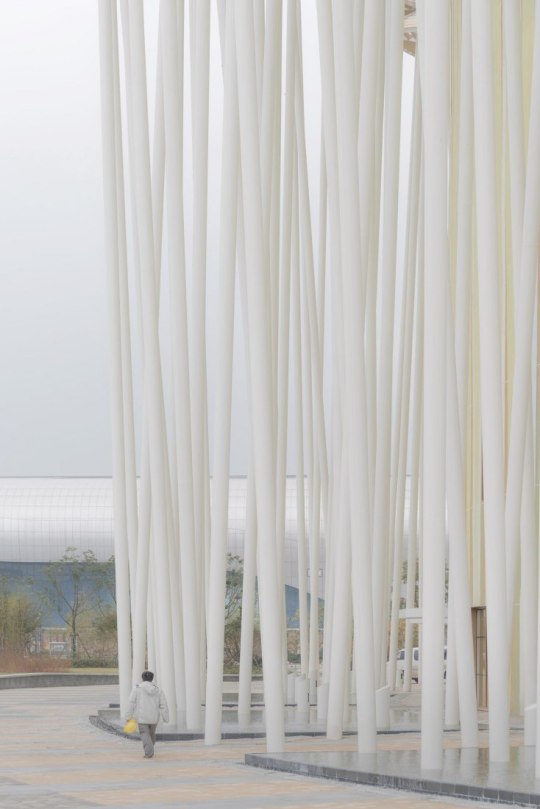
597 notes
·
View notes
Text

Happy birthday, Zhou Enlai! (March 5, 1898)
Premier of the People's Republic of China from 1954 to 1976, Zhou Enlai was born in Jiangsu Province to a bureaucratic family. He spent some time during his education in Japan, where he began reading left-wing literature, and was particularly influenced by Chen Duxiu. Returning to China a left-wing activist, Zhou joined the Communist Party of China and took part in student protests. At first a member of the Nationalist Army, after the KMT-Communist split Zhou served in the Chinese Civil War on the side of the Communists, primarily working in intelligence and logistics. Zhou became a leading member of the CPC around this time. After World War II, the Communists won the Civil War and took control of mainland China, with Zhou, an ally of Mao Zedong, becoming a key government figure. Zhou had great influence on China's foreign policy and diplomacy, and helped to open relations with the United States and secure China's seat on the United Nations Security Council. He died in 1976.
153 notes
·
View notes
Text

Tea Pet or Tea Lover's Pet (simplified Chinese: 茶宠; traditional Chinese: 茶寵; pinyin: cháchǒng), also known as Chachong, is a small pottery figure which is kept by some tea drinkers for good luck.[1] They are usually made of "zisha" or Yixing clay, from the region near Yixing in Jiangsu province, China. Similar to Yixing teapots made from the same clay, tea pets are unglazed, and are mostly monochromatic with a rough surface.[2]
A tea pet is typically placed on a tea tray and has tea poured over it during tea time. Due to the tea pet not being glazed, the figurine absorbs some of the tea, resulting in the tea pet changing color over time, as well as building up a tea scent.
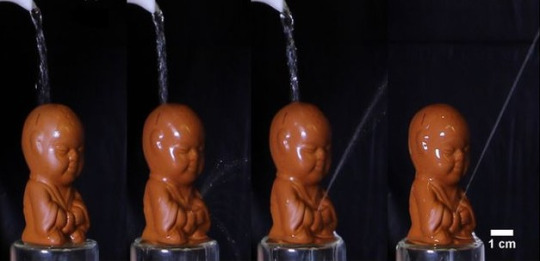
One of the most popular models for the tea pet is the "pee-pee boy", which, when first soaked in cold water and then showered with hot water, will squirt out the water it previously absorbed.
The main feature of the "pee-pee boy" is the ability to squirt water when hot water is poured onto it. To do this, the tea pet, which is hollow, is immersed in cold water until it is filled up, and is shaken to ensure it is halfway filled with water; after this, hot water poured over the "pee-pee boy" will make it "pee" if the water is hot enough. The hotter the water, the farther it "pees".
The principle behind the "pee-pee boy" is thermal expansion of air. It is designed to be hollow with only one tiny opening, so that water can flow into the "pee-pee boy" at a slow pace, and will not drip out until sufficiently hot water is poured on its head. When hot water is poured over its head, the air in the "pee-pee boy" expands, resulting in the water being squeezed out through the tiny opening. Experimental and simulation results based on thermodynamics and fluid mechanics principles have verified the capability of such device to measure temperature.[3]
32 notes
·
View notes
Text

Ancient Noble Tomb Found in China
A noble tomb has been found in a cemetery dating back to the Six Dynasties period (222-589) in the city of Zhenjiang, east China's Jiangsu Province, according to the city's cultural relics and archaeology institute.
The owner of the tomb, named Zhao Xuanzhi, was the uncle of an emperor during the Southern Dynasty (420-589).
Archaeologists found a bronze seal in Tomb No. 6 that helps identify the owner of the tomb. "The bronze seal found in Tomb No. 6 has been confirmed as Zhao Xuanzhi's personal seal. The age of the tomb is consistent with historical records," said Li Xidong, deputy director of the city's cultural relics and archaeology institute.
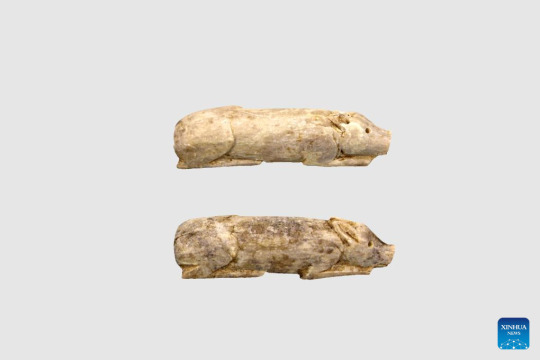

Twenty funerary objects were also unearthed from Tomb No. 6, mostly distributed near the altar at the front of the tomb chamber.
Archaeologists found 13 tombs during recent excavations, seven of which were brick chamber tombs of aristocrats from the Eastern Jin Dynasty (317-420) to the Southern Dynasty, while six others were pit tombs of civilians from the Ming and Qing Dynasties (1368-1911).
Archaeologists said most of the tombs found in the cemetery of the Six Dynasties period belong to the Eastern Jin Dynasty, which provides evidence of people at that time moving from the north to the south. The discovery provides important clues and material data for the study of ethnic migration in Chinese history.
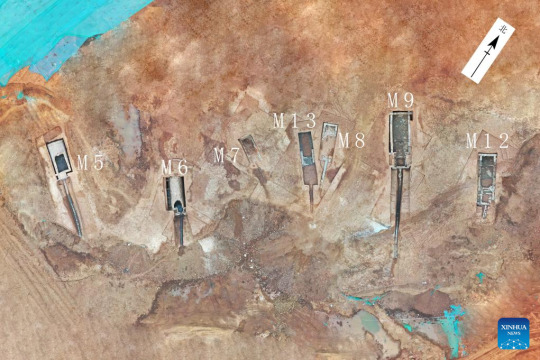
#Ancient Noble Tomb Found in China#Zhenjiang#Jiangsu Province#Six Dynasties period#Zhao Xuanzhi#ancient tomb#ancient grave#ancient artifacts#archeology#archeolgst#history#history news#ancient history#ancient culture#ancient civilizations#ancient china#chinese history#chinese art
33 notes
·
View notes
Text


苏州 Suzhou (2) by rauxa i seny
2 notes
·
View notes
Text
Cast members wearing hanfu and guzhuang (i.e, ahistorical period/fantasy clothing) at 东方盐湖城/Oriental Salt Lake Resort, a theme park and scenic tourist destination in Jiangsu province, China.
#douyin#video#tiktok#hanfu#guzhuang#parks and tourism#all the looks in the front are guzhuang and then after the last lady in black#starting with the lady who bows,all the following looks are more traditional hanfu (from the han/early dynasties it looks like)
859 notes
·
View notes
Text
Wu Cheng'en and Journey to the West (2010) 吳承恩與西遊記


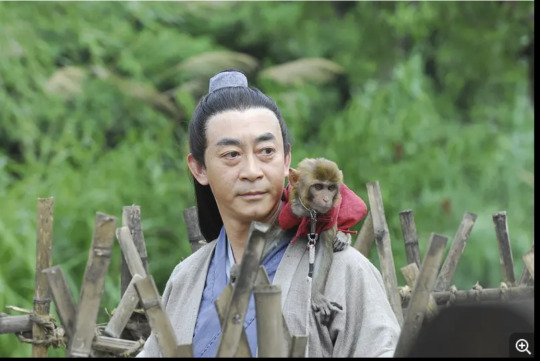
Director: Kan Weiping
Screenwriter: Wang Shuqiang / Ding Aimin
Starring: Liu Xiaolingtong / Ma Su / Shi Xiaoqun / Sun Tao / Chi Chongrui / Ma Dehua
Genre: Drama / Biography / Fantasy / Adventure / Costume
Country/Region of Production: Mainland China
Language: Mandarin Chinese
Date: 2010-07-01 (Mainland China)
Episodes: 46
Single episode length: 46 minutes
Also known as: Wu Cheng En and Journey to the West / 吴承恩与西游记
Type: Crossover
Summary:
In the movie, the protagonist Wu Chengen is wise and foolish, advocating justice, suave, romantic, poetic, calligraphy and painting, and is unique through the ages; the characters of "Journey to the West" such as Sun Wukong, Tang Seng, Zhu Bajie,
etc. It complements the original characters in the play; the rich and fantastic myths, fantasy, chivalry, bold and interesting artistic expression styles, and modern high-tech three-dimensional expression methods greatly expand the extraordinary imagination of heaven and earth. During the Jiajing period of the Ming Dynasty, Wu Yue, a minor official in Shanyang County, Huai'an, Jiangsu Province, went to Yuntai Temple in Huaguo Mountain with his son, and talked with his old friend Puyin, hoping that his son Wu Cheng'en would be able to study and become an official and honor his ancestors. However, Wu Cheng'en, who has never forgotten his books and is very talented, fell in love with the lively monkeys in the Water Curtain Cave of Huaguo Mountain, and imagined that he could be as free, unconstrained, and omnipotent as the monkeys.
The 76-year-old old master Li has failed the examinations for more than 60 years. On this day, he entered the examination room with a rope and declared that if he failed to pass the first place, he would die. However, Wu Chengen won first place in this exam, and his friend Shen Kun came in second. Master Li, who failed the ranking, was full of regrets, but full of hope for Wu Chengen. Before he died, he asked Cai Ang, the official of the court, to discipline Wu Chengen more, so that he could be promoted to an official in the future, fulfilling his wish. Wu Chengen's elder sister, Wu Chengjia, was born beautiful. Luo Wanjin, a rich man in Shanyang County, relied on the relationship between Yan Song, the prime minister of the court, and tried every means to marry Wu Chengjia, but the Wu family refused; his son Luo Pang was jealous of Wu Chengen's talent and had nothing to do; The family formed an indissoluble grievance.
Wu Chengen's parents, sister, and wife Ye Yun are full of hope for him to study and become an official. Wu Chengen still goes his own way, reading monkey books, learning monkey steps, listening to monkey shows, and getting acquainted with monkey artist Niu Yufeng. Shen Kun and Li Chunfang, good friends from the same hometown, jokingly called Wu Chengen a monkey idiot. Although they tried their best to persuade him to cherish his talents and become an official, they couldn't resist Wu Chengen's unshakable stereotypes and his stubborn opinion that he didn't want to be an official. His friends have to let him take pleasure in monkeys, make monkeys their friends, and take writing Journey to the West as his own ambition. Accompanied by his beloved wife and a monkey, Wu Chengen traveled around the world and returned to Huaguo Mountain, which shocked the court and experienced many challenges.
However, Wu Chengen is determined, cares about the folks, and has fantastic ideas, how the Monkey King was born, the golden cudgel is like a wind, the monkeys make trouble in the Heavenly Palace, the friend Bajie refuses relatives. Yufeng, his wife, saves her husband by dripping blood, and the wits fight the old way such as Huang Feng, beating the Bull Demon King angrily, punishing pirates, and building a monkey garden in righteousness came into being. A mythological masterpiece "Journey to the West", which symbolizes the perseverance, optimism, and enterprising spirit of the Chinese people, full of ideals, great wisdom, and courage, has finally been completed under the pen of Wu Chengen.
Facing the manuscript of "Journey to the West" written by his late friend Wu Chengen, his good friend Li Chunfang sat upright at the table, wrote "Journey to the West written by Wu Chengen" on the front page, and murmured softly: Cheng En, you are the Monkey King, You are Sun Wukong! You say you are Sun Wukong! Ten years after Wu Chengen's death, his "Journey to the West" was corrected by Li Chunfang and officially published by Nanjing Shidetang in 1592. On October 8, 2005, the Wu Chengen Memorial Hall was completed and opened in Huai'an City, Jiangsu Province...
Source: https://en.wikipedia.org/wiki/Wu_Cheng%27en_and_Journey_to_the_West_(2010)
Link: N/A
#Wu Cheng'en and Journey to the West#吳承恩與西遊記#吴承恩与西游记#Wu Cheng En and Journey to the West#jttw television#jttw media#television#lost media#live action#crossover#sun wukong#wu cheng'en
22 notes
·
View notes
Text
The first shipment of products from the Baowu Liberia iron ore project arrived at Zhenjiang Port, and the project in neighboring Guinea is accelerating.
According to the latest news from China Baowu, the world’s largest steel company, on the afternoon of October 12, the “Changhai Binhai” ship, which had been sailing for more than a month, entered the river from the sea and successfully berthed at the No. 10 berth of Zhenjiang Port, Jiangsu. The “Changhang Binhai” ship is fully loaded with 45,000 tons of iron ore products from Liberia. This is also the first overseas self-produced iron ore product since Baowu Resources, a subsidiary of China Baowu, accelerated the development and construction of overseas resources.[...]
Liberia is only the beginning of Baowu Resources’ overseas strategy in Africa. Its neighboring country Guinea is becoming the next larger source of iron ore. The Simandou Iron Mine, located in Kairouane Province in southeastern Guinea, is the undeveloped iron ore with the largest reserves and the highest quality in the world. It has an initial annual production capacity of 120 million tons of high-quality iron ore.
Previously, on September 30, 2022, Baowu Resources and Win Alliance Simandou Holdings Company (Singapore) held cloud signings of the core terms of the cooperation agreement in Shanghai and Beijing regarding the cooperation on the northern block project of Simandou Iron Ore in Guinea. ceremony. This is also the official announcement of China Baowu’s “entry” into the northern Simandou project.
The project is also accelerating. On the afternoon of October 7, Baowu Resources and Simangdu Win Alliance signed a confirmation letter of shareholder agreement for the Simangdu Northern Block Project Mining Joint Venture Company at Baowu Building. Simandou Win Alliance (WCS) is a consortium formed by Singapore’s Winning International Group and Weiqiao Entrepreneurship Group. It holds the mining rights of the northern block of Simandou (Blocks 1 and 2).
The Simang Duying Alliance has an annual bauxite production capacity of 50 million tons in Guinea and experience in the construction and operation of the Dar-Saint-Saint-Saint-German Railway. It has unique advantages in ports, transfers, and ocean transportation.
Hu Wangming, Secretary of the Party Committee and Chairman of China Baowu, pointed out at the signing of the contract on October 7 that the security of ore resources is related to national strategy, and the Simandou project is of great significance to the security and resilience of the industrial chain and supply chain of China’s steel industry.
16 Oct 23
16 notes
·
View notes
Text

Choose clean water Suqian, China Hongze Lake is the fifth-largest freshwater lake in China, and a scenic spot in Jiangsu province Photograph: Costfoto/NurPhoto/Rex/Shutterstock / Guardian Newspaper #freshwater #china
8 notes
·
View notes